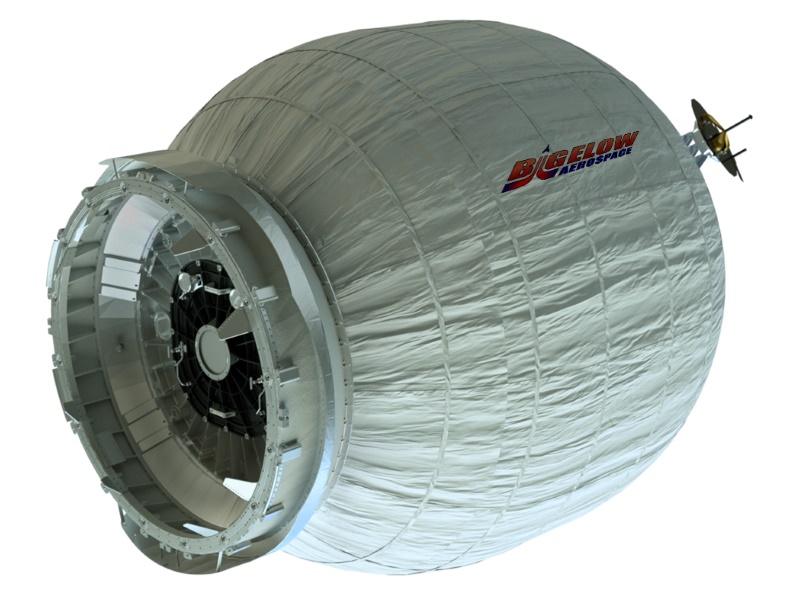- Home
- Science
- Science News
- ISS Astronauts Set to Live in First Expandable Space Habitat
ISS Astronauts Set to Live in First Expandable Space Habitat

Nasa astronaut Jeff Williams performed leak checks and installed hardware to monitor and support Beam expansion set to begin at 6.30pm (India time). The expansion could potentially start earlier, Nasa said in a statement.
Meanwhile, a new trio of ISS crew members is ready in Russia for final qualification exams for a mission set for launch on June 24.
Cosmonaut Anatoly Ivanishin will command the new Soyuz MS-01 spacecraft carrying Nasa astronaut Kate Rubins and Jaxa astronaut Takuya Onishi.
Nasa Television will broadcast the expansion activities live. Crew entry into Beam, which has an expanded habitable volume of 565 cubic feet (16 cubic metres), is planned for June 2.
Recently, carrying over 3,700 pounds of Nasa cargo, science and technology demonstration samples from the ISS, a SpaceX Dragon cargo spacecraft splashed down in the Pacific Ocean.
The Dragon spacecraft was taken by ship to Long Beach where some cargo was removed and returned to Nasa for processing.
On April 17, engineers at Nasa Johnson Space Centre in Houston used the ISS's high-tech robotic arm to pluck Beam from the back of the SpaceX Dragon cargo ship that reached the space station on April 11 and added it onto the orbiting laboratory complex.
At the time of installation, the space station was moving over the Southern Pacific Ocean at an altitude of about 350 km from the Earth's surface. It will remain attached to the station for the two-year test period, US space agency Nasa had written in a blog.
Nasa is investigating concepts for habitats that can keep astronauts healthy during space exploration and Beam will be the first test of such a module attached to the space station.
It will allow investigators to gauge how well it performs overall and how it protects against solar radiation, space debris and the temperature extremes of space.
Expandable habitats require less payload volume on the rocket than traditional rigid structures and expand after being deployed in space to provide additional room for astronauts to live and work inside.
After the testing period is completed, Beam will be released from the space station to eventually burn up harmlessly in the earth's atmosphere.
The 1,400 kg Beam is a 17.8 million dollar project to test the use of an inflatable space habitat in micro-gravity.
A total of six astronauts are already on-board the ISS along with another US commercial cargo ship called Cygnus that has been attached to the station since March 26.
For the latest tech news and reviews, follow Gadgets 360 on X, Facebook, WhatsApp, Threads and Google News. For the latest videos on gadgets and tech, subscribe to our YouTube channel. If you want to know everything about top influencers, follow our in-house Who'sThat360 on Instagram and YouTube.
Related Stories
- Samsung Galaxy Unpacked 2025
- ChatGPT
- Redmi Note 14 Pro+
- iPhone 16
- Apple Vision Pro
- Oneplus 12
- OnePlus Nord CE 3 Lite 5G
- iPhone 13
- Xiaomi 14 Pro
- Oppo Find N3
- Tecno Spark Go (2023)
- Realme V30
- Best Phones Under 25000
- Samsung Galaxy S24 Series
- Cryptocurrency
- iQoo 12
- Samsung Galaxy S24 Ultra
- Giottus
- Samsung Galaxy Z Flip 5
- Apple 'Scary Fast'
- Housefull 5
- GoPro Hero 12 Black Review
- Invincible Season 2
- JioGlass
- HD Ready TV
- Laptop Under 50000
- Smartwatch Under 10000
- Latest Mobile Phones
- Compare Phones
- Motorola Edge 60
- Motorola Edge 60 Pro
- Motorola Razr 60
- Motorola Razr 60 Ultra
- Realme 14T 5G
- Redmi Turbo 4 Pro
- Honor X70i
- Red Magic 10 Air
- HP EliteBook 6 G1a
- HP EliteBook 8 G1a
- Honor Pad GT
- Vivo Pad SE
- Moto Watch Fit
- Honor Band 10
- Xiaomi X Pro QLED 2025 (43-Inch)
- Xiaomi X Pro QLED 2025 (55-Inch)
- Asus ROG Ally
- Nintendo Switch Lite
- Toshiba 1.8 Ton 5 Star Inverter Split AC (RAS-24TKCV5G-INZ / RAS-24TACV5G-INZ)
- Toshiba 1.5 Ton 5 Star Inverter Split AC (RAS-18PKCV2G-IN / RAS-18PACV2G-IN)
















